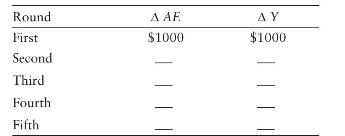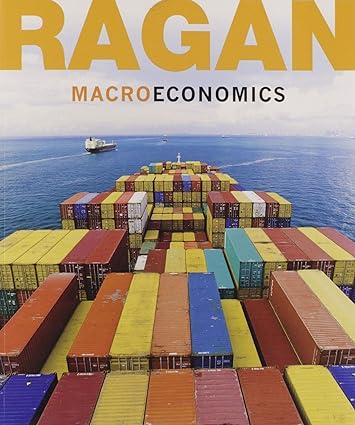This question is intended to illustrate the similarity between the simple income-expenditure multiplier from Chapters 21 and
Question:
This question is intended to illustrate the similarity between the simple income-expenditure multiplier from Chapters 21 and 22 and the deposit multiplier that we examined in this chapter.
a. Recalling the macro model of Chapters 21 and 22 , suppose the marginal propensity to spend out of GDP, \(z\), is 0 .6 . If autonomous spending increases by \(\$ 100 0\), fill in the table below. (You might want to re-read Applying Economic Concepts 21 -1.)

b. The sum of the values in the third column should be

What is the total change in GDP (after an infinite number of rounds)?
c. Now consider the process of deposit creation from this chapter. Consider a new deposit of \(\$ 100 0\) and a target reserve ratio, \(v\), of 0 .25 (with no cash drain). Fill in the following table:

d. The sum of the values in the first column should be

What is the total change in deposits (after an infinite number of rounds)?
e. Explain why taxes and imports for the simple multiplier in Chapter 21 are similar to a reserve ratio for the deposit multiplier in this chapter.
Step by Step Answer:






